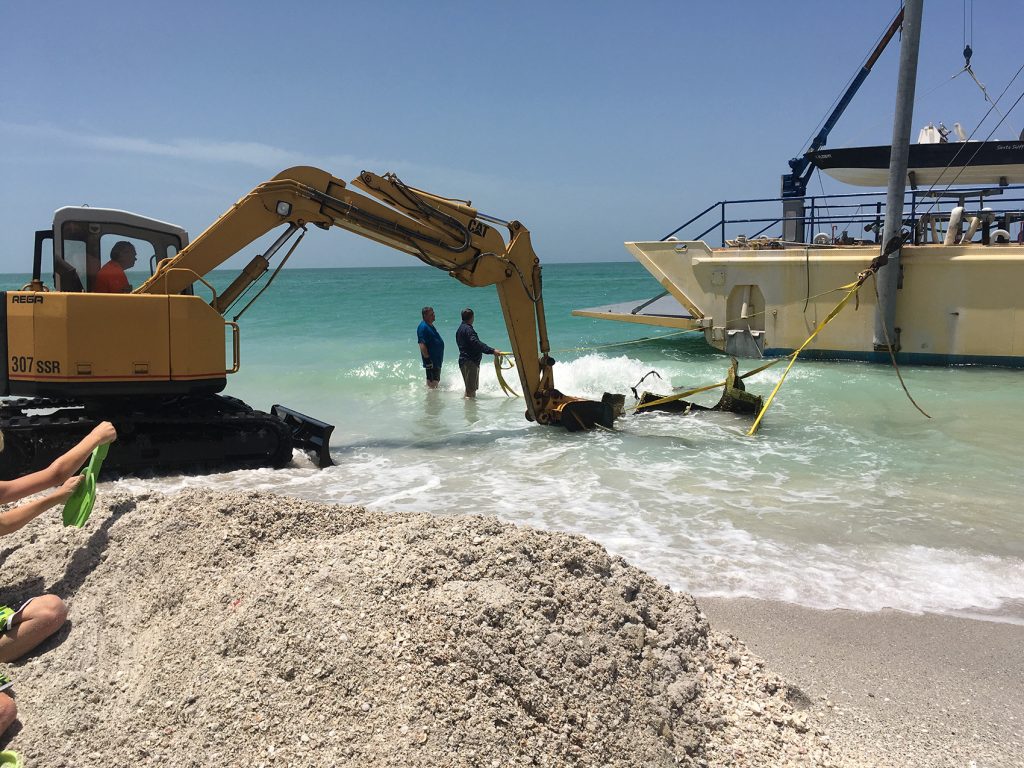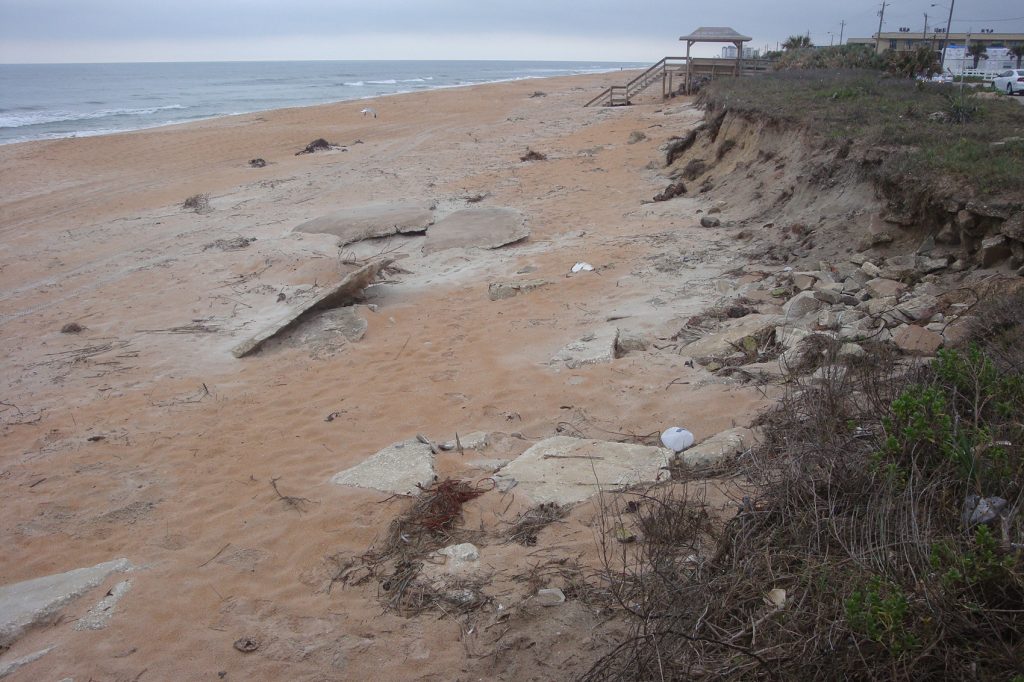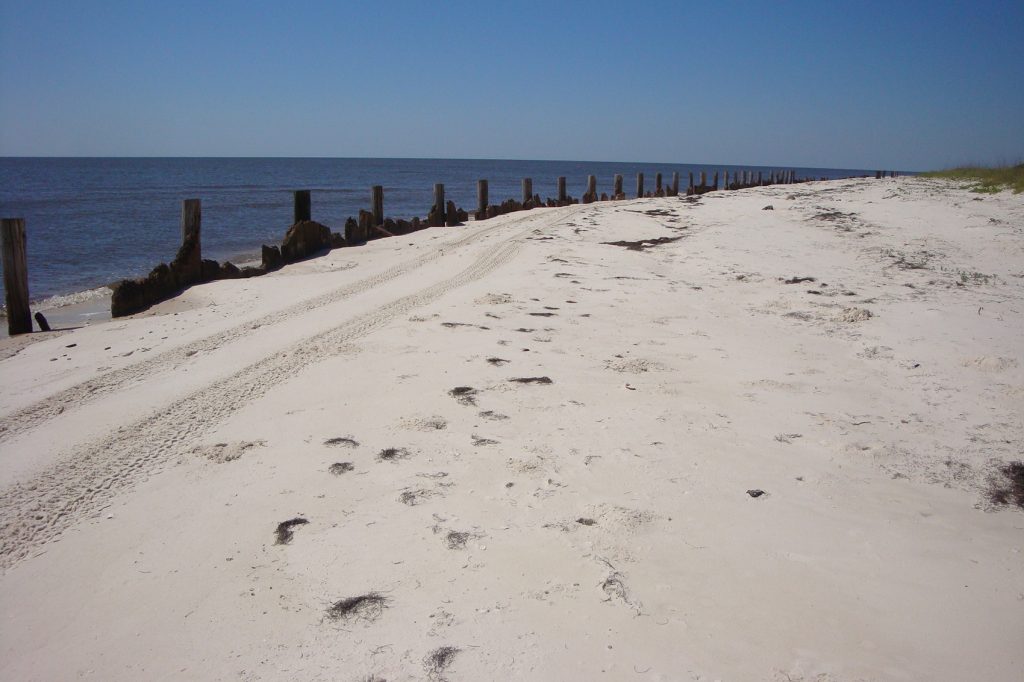One of the great threats to sea turtles nesting in Florida is the substantial decline in quantity and quality of nesting beaches along Florida coastlines as a result of coastal development, destructive storms, and rising sea level. In addition, sea turtle foraging habitats in Florida waters are also degraded by accumulation of debris – particularly abandoned fishing gear.
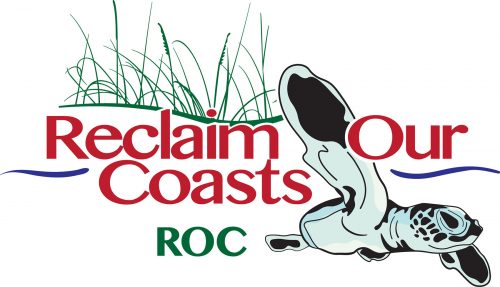
With funding from the Reverse the Decline of Florida Sea Turtles, we have established the Reclaim our Coasts (ROC) program. Under this program, we increase the quantity and improve the quality of both nesting beaches and foraging grounds by removing debris and obstacles that block access to nesting areas.
Female sea turtles come ashore at night to deposit their eggs. They slowly crawl up sandy beaches to an area above high tide and dig a hole for a nest chamber and deposit about 100 eggs. They next carefully cover the eggs with sand using their rear flippers and camouflage the nesting site by throwing sand with their front flippers. They then return to the sea, leaving the eggs to develop on their own. The entire nesting process takes about 1 to 2 hours. After hatching, the hatchlings emerge from the nest at night and move rapidly towards the ocean.
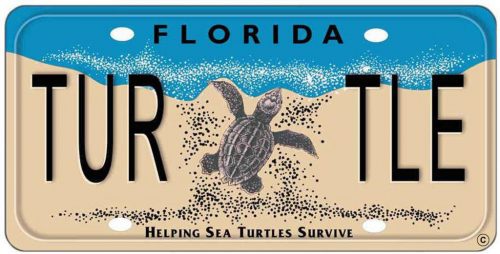 Under the auspices of ROC, we have now conducted removals of 6 obstacles and restored dune vegetation at one of our sites on New Smyrna Beach by planting 670 sea oat plants with the help of a local 4-H group (SALT 4-H). At all of these sites, we have partnered with County and State officials. ROC is also supported by grants awarded from the Sea Turtle Grants Program, which is funded from proceeds from the sale of the Florida Sea Turtle License Plate. Learn more at www.helpingseaturtles.org.
Under the auspices of ROC, we have now conducted removals of 6 obstacles and restored dune vegetation at one of our sites on New Smyrna Beach by planting 670 sea oat plants with the help of a local 4-H group (SALT 4-H). At all of these sites, we have partnered with County and State officials. ROC is also supported by grants awarded from the Sea Turtle Grants Program, which is funded from proceeds from the sale of the Florida Sea Turtle License Plate. Learn more at www.helpingseaturtles.org.
Examples of a few removals
- An area of about 1250 m2 on a nesting beach in Volusia County was cleared of about 29,000 kg of concrete debris in January 2017 that had been exposed by Hurricane Matthew.
- An abandoned, derelict sailboat that had stranded in 2015 was removed from the surf zone of a sea turtle nesting beach on Little Gasparilla Island, Florida, in May 2017. A variety of debris was collected – more than 800 kg of fiberglass, a battery, two metal keels, rope, and wires – all of which posed a hazard to nesting turtles, hatchlings, and coastal visitors.
- We also assisted with the removal of a large shrimp trawl net that was snagged and abandoned on an artificial reef off Bonita Springs in Lee County in February 2017 and a stranded boat in Hobe Sound National Wildlife Refuge in Martin County in April 2017.
Our ROC team is currently assessing several other sites with obstacles, including barriers and debris in Bald Point State Park in Franklin County, Cape San Blas in Gulf County, Lido Key in Sarasota County, Shell Key in Pinellas County, and property adjacent to Varn Park in Flagler County.
We are always looking for obstacles on nesting beaches and in sea turtle foraging habitats in Florida waters for possible removal. Please send us information if you know of any!
